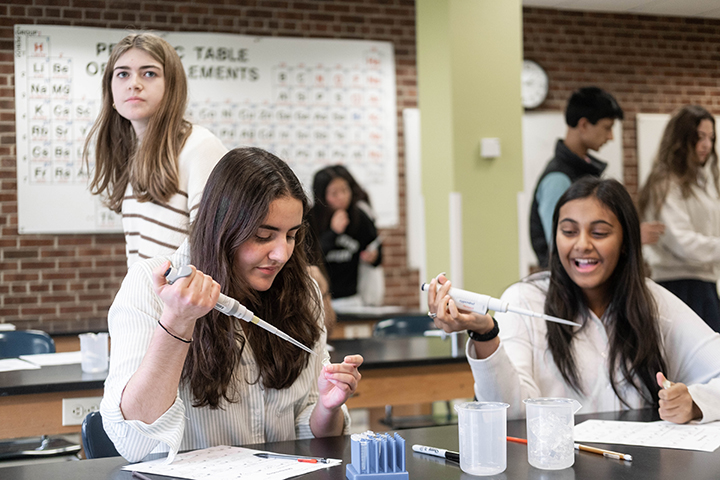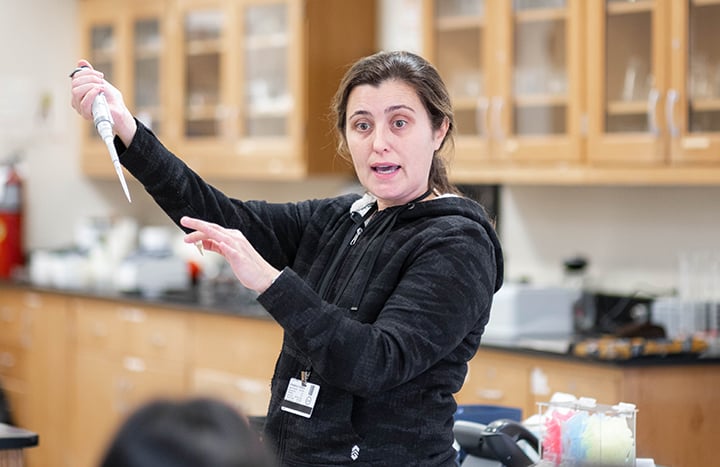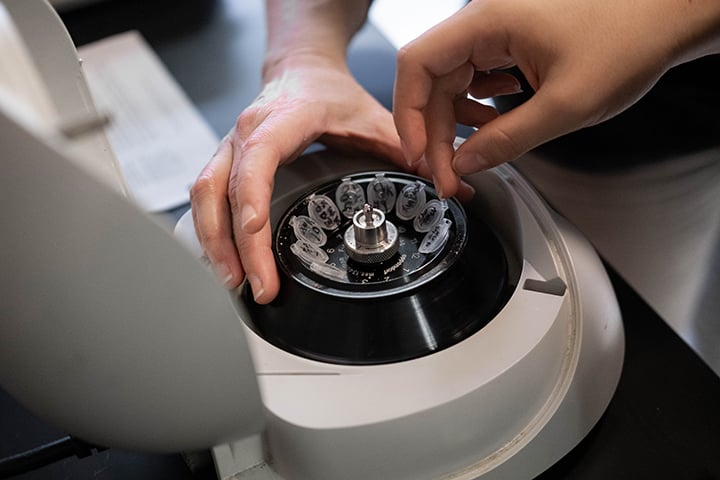‘A Fun Night Being Together and Feeling the Holiday Spirit’
12-12-25
Subscribe
Close
Fill out the form below to receive updates on the latest and greatest within the Friends Academy community.

With pipettes in hand and brows furrowed in concentration, students in Science Research: DNA Barcoding, co-taught by Jen Newitt and Vijay Suthar, listened closely to guest instructor Dr. Cristina Fernandez-Marco from the DNA Learning Center as she explained how to extract DNA from plant, fungal, and animal samples. “Anything with DNA involves very small tools,” commented Dr. Fernandez-Marco.
This fall, Friends Academy is a partner school with the Cold Spring Harbor-based DNA Learning Center, which dispatches its researchers to participating schools. In a practice run with students, Dr. Fernandez-Marco walked students through the microbiology lab techniques of micropipettes and centrifuges.

At the start of the class students employed science writing skills as they were tasked with writing research proposals to the Barcode Long Island Team at the DNA Learning Center. “These proposals needed to be evaluated, revised, and accepted before research commenced,” explained Ms. Newitt. There are six research teams in the class, each with different research questions they have developed.
.jpg?width=823&height=432&name=_DSF0064%20(2).jpg)
Exploratory investigation and specimen collection followed as students fanned out to the field – Bailey’s Arboretum, Shu Swamp, and even the man made Friends Academy “pond” – to bag and bottle samples of either lichens or aquatic invertebrates.
Their mission now is to identify their samples using DNA isolation and identification techniques.
“While the students practiced using traditional identification methods, such as taking photos of specimens and consulting field guides, they are learning that they can more accurately identify their samples by isolating the DNA and comparing to known specimens,” said Ms. Newitt.
With Dr. Fernandez-Marco’s guidance, students embarked on Phase 3 of extracting and copying DNA. “Why is a centrifuge important?” she queried students. “And where do you think the DNA will be located?” she added.

Junior Cassian Gerasimenko is already seeing the benefits of this type of hands-on investigation both in this class and others. “I’ve never done this before and it’s helped me learn the shape of DNA and its components… and led to an article that I wrote for the student paper Inkwell,” shared Cassian. “In my previous biology class I remember learning a little bit about DNA, but now that we are extracting it, it seems to hold a three-dimensional value for me,” he added.
-1.jpg?width=823&height=534&name=_DSF0029%20(2)-1.jpg)
Extraction complete, the samples will soon be sent off to a third-party DNA sequencing lab. “Using bioinformatics, students can compare their sequences to online databases of all known sequences in order to determine where they are most closely aligned,” said Ms. Newitt. “And from there, research teams will be able to fit their specimens into an evolutionary tree and answer their central research questions, for example: Is there more biodiversity in the manmade environment on campus versus a natural one?”
At the culmination of the course, students will be formally presenting their results to researchers at The DNA Learning Center. “Next year, we are hoping that with these new skills and technological competencies, this course can evolve and students can create their own more advanced research project,” said Ms. Newitt. “Especially as we climb to the next level of DNA Learning Center membership, which opens up more opportunities for sophisticated research.”
Photography by Alvin Caal/Friends Academy
Did you enjoy this post? Here are a few more we think you'd be interested in:
Fill out the form below to receive updates on the latest and greatest within the Friends Academy community.